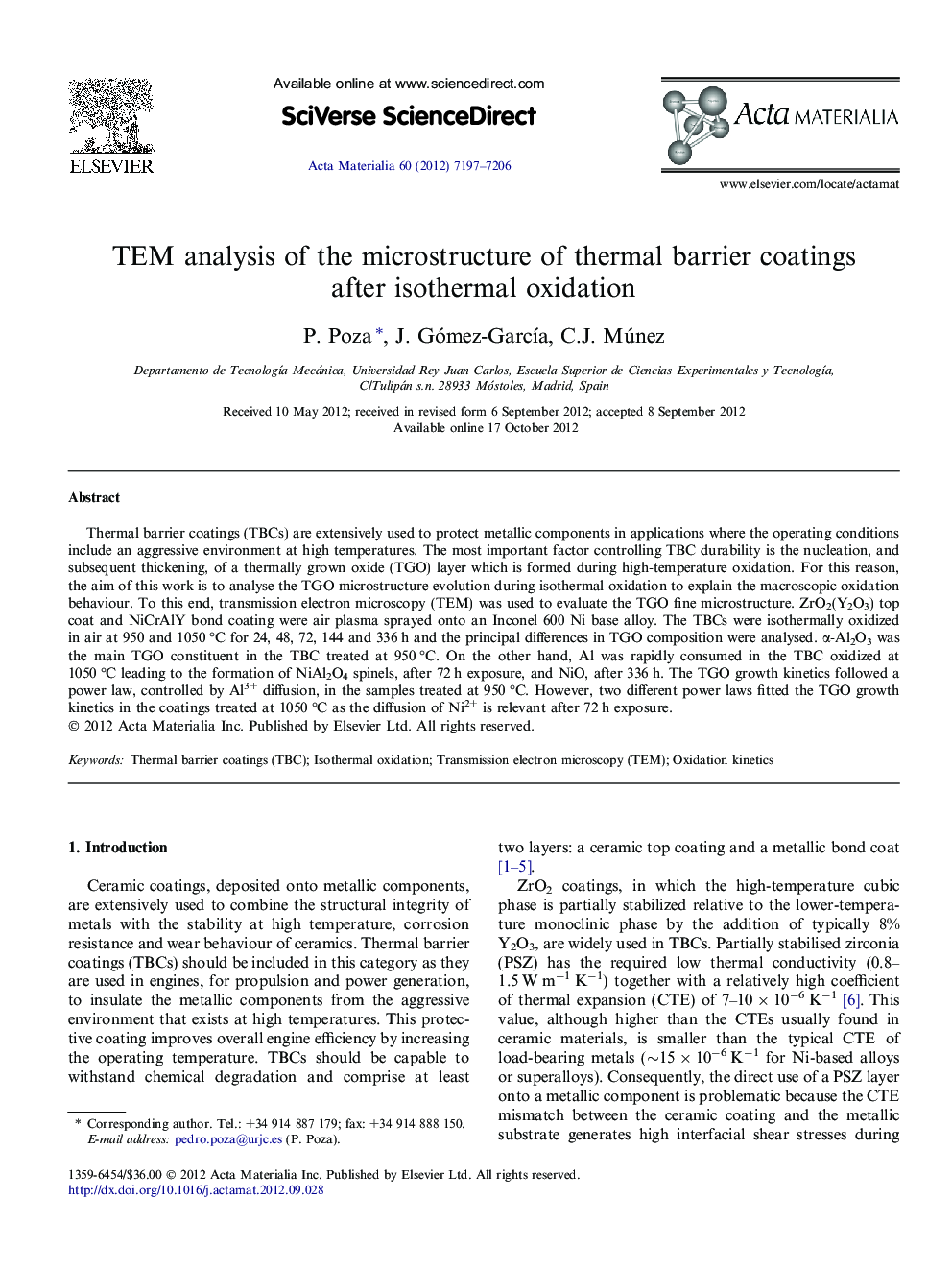| Article ID | Journal | Published Year | Pages | File Type |
|---|---|---|---|---|
| 1446468 | Acta Materialia | 2012 | 10 Pages |
Thermal barrier coatings (TBCs) are extensively used to protect metallic components in applications where the operating conditions include an aggressive environment at high temperatures. The most important factor controlling TBC durability is the nucleation, and subsequent thickening, of a thermally grown oxide (TGO) layer which is formed during high-temperature oxidation. For this reason, the aim of this work is to analyse the TGO microstructure evolution during isothermal oxidation to explain the macroscopic oxidation behaviour. To this end, transmission electron microscopy (TEM) was used to evaluate the TGO fine microstructure. ZrO2(Y2O3) top coat and NiCrAlY bond coating were air plasma sprayed onto an Inconel 600 Ni base alloy. The TBCs were isothermally oxidized in air at 950 and 1050 °C for 24, 48, 72, 144 and 336 h and the principal differences in TGO composition were analysed. α-Al2O3 was the main TGO constituent in the TBC treated at 950 °C. On the other hand, Al was rapidly consumed in the TBC oxidized at 1050 °C leading to the formation of NiAl2O4 spinels, after 72 h exposure, and NiO, after 336 h. The TGO growth kinetics followed a power law, controlled by Al3+ diffusion, in the samples treated at 950 °C. However, two different power laws fitted the TGO growth kinetics in the coatings treated at 1050 °C as the diffusion of Ni2+ is relevant after 72 h exposure.
Graphical abstractFigure optionsDownload full-size imageDownload high-quality image (260 K)Download as PowerPoint slide
